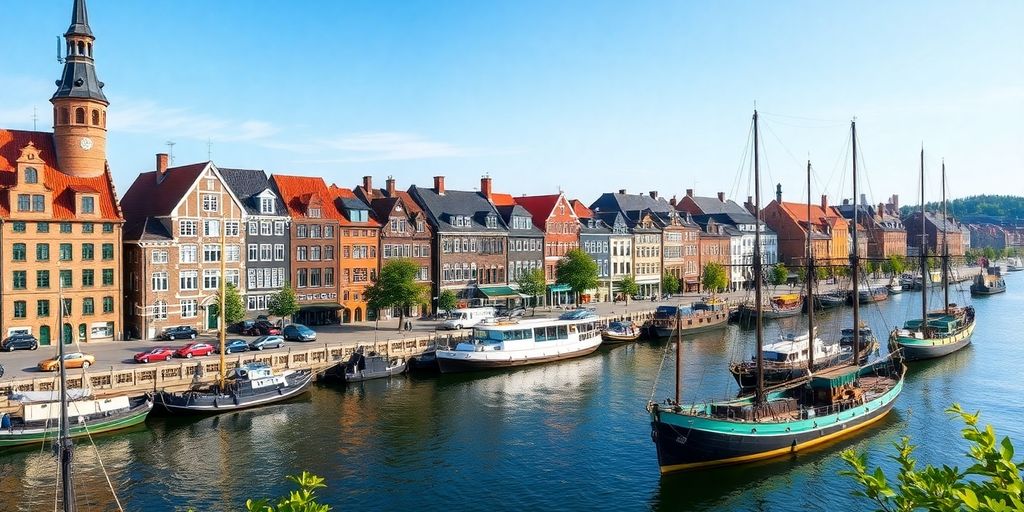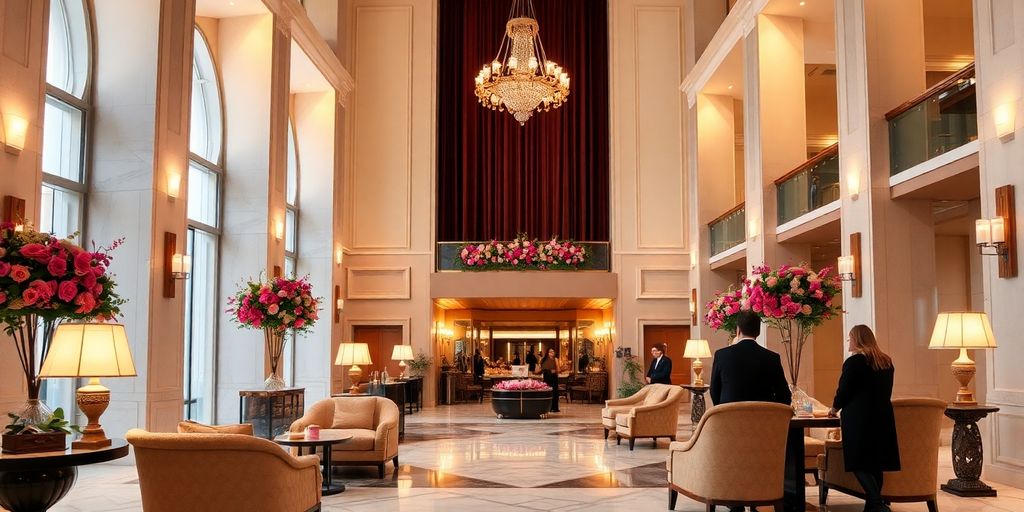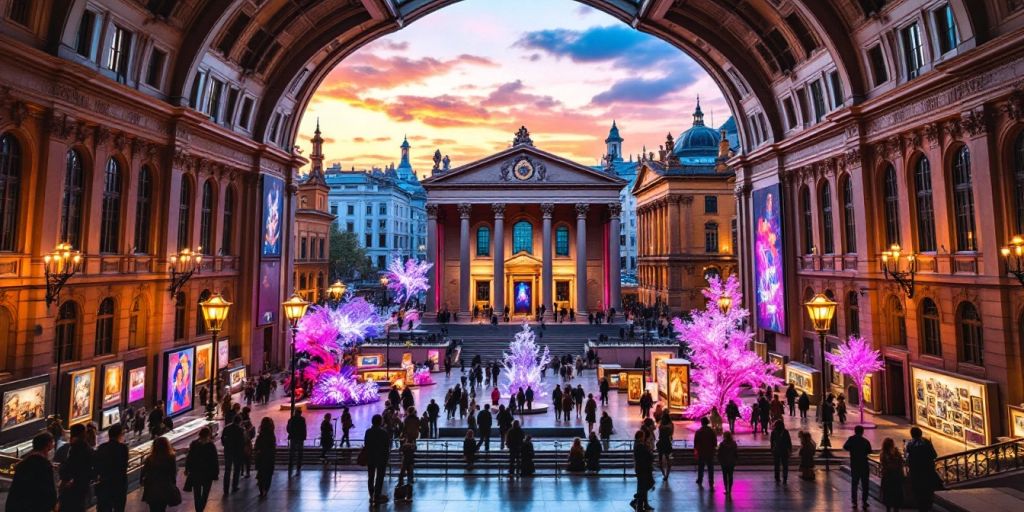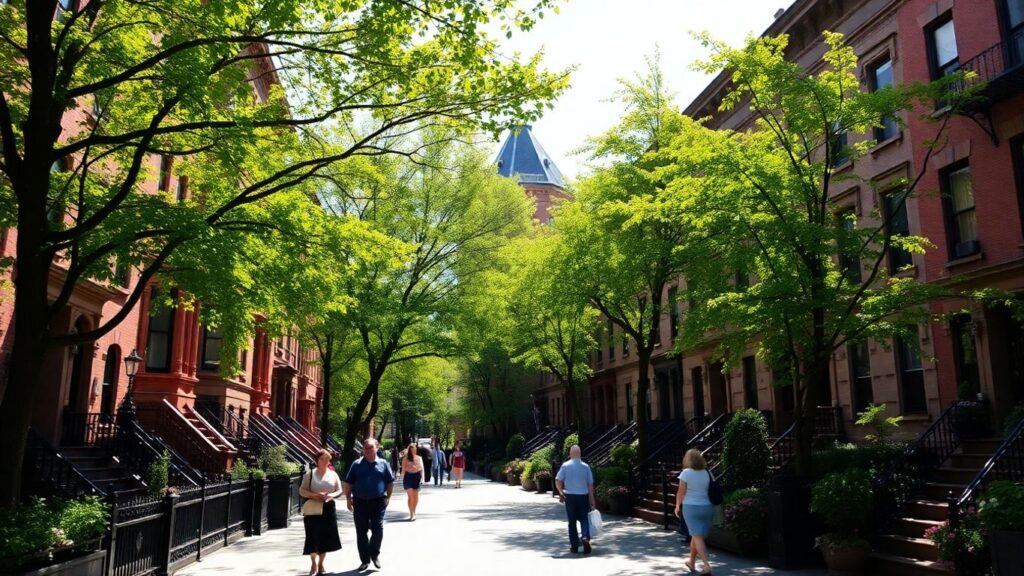Exploring Gothenburg Built by the Dutch: A Historical Journey Through Sweden’s Maritime Legacy

Gothenburg, a city on Sweden’s west coast, is a fascinating blend of history and modernity. Founded in the 1600s, its origins are deeply tied to Dutch expertise. The Dutch were instrumental in designing the city’s canals and layout, which are still prominent today. Over the years, Gothenburg has been a significant maritime hub, contributing to Sweden’s trade and cultural exchanges. It’s a city where past and present coexist, offering visitors a unique glimpse into its rich heritage and vibrant present.
Key Takeaways
- Gothenburg was founded in the 1600s with significant influence from Dutch architects, evident in its canals and city design.
- The city’s strategic location on the Göta River has made it a key player in maritime trade throughout history.
- Gothenburg’s fortifications, like Skansen Lejonet and Skansen Kronan, showcase its historical military importance.
- In the 18th and 19th centuries, the city saw economic growth through industries such as shipbuilding, tobacco, and sugar.
- Today, Gothenburg is celebrated for its green spaces, cultural sites, and vibrant neighborhoods, blending history with modern life.
The Dutch Influence on Gothenburg’s Architecture
Canals and City Layout
Gothenburg’s city design is a testament to its Dutch roots. When the city was founded in 1621, the Dutch were the go-to experts for building on marshy land. They crafted a city with a network of canals, reminiscent of the Netherlands. These canals not only helped with drainage but also gave the city its unique charm. The grid-like layout of the streets was another Dutch contribution, making navigation through the city straightforward and efficient.
Notable Dutch-Inspired Buildings
Some buildings in Gothenburg still reflect the Dutch architectural influence. The Kronhuset, built in 1654, is one of the oldest structures and showcases classic Dutch design elements. Its brick façade and gabled roof are typical of the era. While many of the original wooden buildings have been lost to fires, those that remain continue to tell the story of Gothenburg’s Dutch beginnings.
Preservation of Historical Structures
Preserving these historical structures is crucial for maintaining the city’s architectural heritage. Efforts have been made to restore and maintain buildings like the Kronhuset, ensuring they stand the test of time. Walking through Gothenburg, one can still see the blend of old and new, where modern structures coexist with those from the past, offering a glimpse into the city’s rich history.
Gothenburg, Sweden, was influenced by early Dutch inhabitants who constructed urban canals and designed the city center in a Dutch style. The city’s architecture is a living museum, showcasing a blend of history and innovation.
Gothenburg’s Maritime Legacy and Trade

The Role of the Göta River
The Göta River isn’t just a body of water flowing through Gothenburg; it’s the city’s lifeline. This river has been the backbone of Gothenburg’s trade since its founding in 1621. Its strategic location made the city a gateway for trade with Europe, facilitating the movement of goods in and out of the Swedish Empire. Even today, the river plays a crucial role in Gothenburg’s economy, supporting both traditional industries like fishing and modern shipping operations.
The East India Company Era
In the 18th century, the Swedish East India Company turned Gothenburg into a bustling hub of international trade. The company’s ships, including the famed East Indiaman Götheborg, sailed from the city’s port to far-off lands, bringing back exotic goods and spices. This era marked a period of prosperity and growth, as the company’s success fueled the local economy and transformed Gothenburg into a major trading center. The wealth generated during this time led to the construction of grand houses and buildings along the city’s canals, reflecting the city’s newfound status.
Modern Shipping and Trade
Fast forward to today, and Gothenburg remains Sweden’s largest port, handling a significant portion of the country’s imports and exports. The city has adapted to the changing times by embracing innovation and sustainability in its shipping practices. New districts like Eriksberg and Lindholmen have emerged from the old shipyards, blending residential areas with cultural and commercial spaces. This transformation highlights Gothenburg’s ability to evolve while maintaining its maritime roots. The city continues to thrive as a center for trade, balancing its rich history with a forward-thinking approach to economic development.
Exploring the Fortifications of 17th Century Gothenburg
The Zigzag City Wall
Gothenburg’s original cityscape was defined by a massive zigzag-shaped city wall, built in the 17th century to protect against invaders. This wall was a marvel of engineering at the time, showcasing the strategic brilliance of its designers. While most of this fortification has been lost to history, a fragment of the bastion known as Carolus Rex XI still stands at Esperantoplatsen, near the famed Feskekörkan, or Fish Church. These remnants offer a glimpse into the city’s fortified past.
Skansen Lejonet and Skansen Kronan
Two prominent fortresses, Skansen Lejonet and Skansen Kronan, were pivotal in Gothenburg’s defense strategy. Skansen Kronan, perched on a hill south of Haga, was completed in 1700 and boasts walls thick enough to withstand cannon fire. Visitors can still see the rows of cannons lining its perimeter, and the views from its hilltop are nothing short of spectacular. Meanwhile, Skansen Lejonet, located on Gullberg Hill, served a similar purpose. These fortresses not only protected the city but also stand today as monuments to Gothenburg’s military history.
Remnants of Carolus Rex XI
Though much of the original fortifications have faded, the bastion Carolus Rex XI remains a noteworthy relic. Situated near the bustling Feskekörkan, it serves as a reminder of the city’s resilient past. This bastion, along with the surviving fortresses, paints a picture of a city once heavily fortified against foreign threats. The strategic placement of these defenses highlights Gothenburg’s importance as a maritime hub, especially during the war with Denmark when King Christian IV attempted to block the city’s access.
Cultural and Economic Evolution in the 18th and 19th Centuries
Industrial Growth and Shipbuilding
In the 18th century, Gothenburg was buzzing with activity. It wasn’t just a city; it was a hub of industry and trade. The city’s port was a key player, thanks to the Swedish East India Company. This company wasn’t just about business; it was about connecting Gothenburg to the world. Ships laden with goods traversed the seas, bringing back treasures from far-off lands. The shipbuilding industry thrived, feeding off the city’s growing reputation as a maritime powerhouse. Gothenburg’s strategic location along the Göta River made it a prime spot for shipbuilding and trade.
The Tobacco and Sugar Industries
Besides shipbuilding, Gothenburg was home to bustling tobacco and sugar industries. These industries weren’t just about production; they were about shaping the city’s identity. The tobacco factories and sugar refineries were symbols of the city’s economic might. Workers flocked to these industries, drawn by the promise of jobs and a better life. The city’s economy was booming, and with it came a vibrant cultural scene. The wealth generated by these industries led to the construction of grand homes and public buildings, many of which still stand today.
Impact of the Swedish East India Company
The Swedish East India Company was more than a business—it was a phenomenon. It played a huge role in shaping Gothenburg’s economic landscape. The company’s ships were a common sight in the port, their holds filled with exotic goods. This trade brought not just wealth, but also a cultural exchange that enriched the city. The influence of the company extended beyond economics; it was a catalyst for cultural growth and innovation.
Gothenburg in the 18th and 19th centuries wasn’t just a city—it was a testament to the power of trade and industry. The interplay between economic growth and cultural evolution created a unique urban landscape, one that continues to captivate visitors today.
In the 19th century, the city continued to grow. Fires in the late 1700s had led to new building regulations, and stone buildings began to replace the wooden structures of old. This transformation was part of the city’s evolution, reflecting a shift towards modernity. The neighborhoods of Vasastaden, Lorensberg, and Avenyn: The Main Boulevard emerged, showcasing the city’s architectural ambitions. These areas became the heart of Gothenburg’s social and cultural life, where art galleries, theaters, and cafes thrived. The industrial growth of the previous century laid the foundation for a vibrant, modern city, where culture and commerce went hand in hand.
Gothenburg’s Green Spaces and Natural Beauty

Slottsskogen and Botanical Gardens
Gothenburg is a city that truly embraces nature, and nowhere is this more evident than in Slottsskogen. This sprawling park is a favorite among locals and tourists alike. It’s not just a park; it’s a whole experience. You can wander through lush green paths, check out the small zoo, or just relax by the pond. Across the road, the Botanical Gardens offer a different kind of tranquility. Known as one of the top gardens in Europe, they showcase a wide array of plants, both local and exotic. It’s a must-visit for anyone with even a passing interest in gardening.
The Gothenburg Archipelago
Just a short ferry ride away, the Gothenburg Archipelago is a collection of islands that feels like a world apart. The southern islands are car-free, making them perfect for a peaceful escape. Whether you’re hiking along rocky shores, diving into the chilly sea, or enjoying a meal at a local café, the archipelago offers a refreshing break from city life. Imagine spending a day exploring these islands, each with its own unique charm.
Kungsparken and Urban Parks
Back in the city, Kungsparken is a green oasis that wraps around the city center. It’s a great spot for a leisurely stroll or a picnic. The park’s well-maintained paths and vibrant flowerbeds make it a popular spot for both locals and visitors. You might find yourself drawn to its peaceful ambiance, perfect for unwinding after a busy day exploring the city.
Gothenburg’s blend of urban life and natural beauty is a testament to the city’s commitment to preserving its green spaces. Whether you’re a nature lover or just need a break from the hustle and bustle, Gothenburg offers plenty of opportunities to connect with nature.
The Vibrant Neighborhoods of Gothenburg
Haga: A Step Back in Time
Haga is like stepping into a different era. This charming neighborhood is packed with cobblestone streets and wooden houses that have stood the test of time. It’s a favorite among both locals and tourists for its cozy cafes and unique shops. Don’t miss out on trying a giant cinnamon bun at Café Husaren on Haga Nygata. The sense of history is palpable, making it a perfect spot for a leisurely stroll.
Vasastaden and Lorensberg
In the heart of Gothenburg, you’ll find Vasastaden and Lorensberg, areas known for their impressive stone buildings and vibrant cultural scene. These neighborhoods are home to some of the city’s best art galleries and theaters. Vasastaden, with its tree-lined streets, offers a mix of student life and artistic flair, thanks to the nearby universities. Meanwhile, Lorensberg boasts beautiful parks and a lively atmosphere, perfect for evening outings.
Avenyn: The Main Boulevard
Avenyn is Gothenburg’s answer to the Champs-Élysées. This main boulevard is lined with shops, restaurants, and bars, making it the go-to place for a night out. Whether you’re looking to enjoy a meal at a Michelin-starred restaurant or simply want to take in the hustle and bustle, Avenyn has something for everyone. It’s a lively strip that captures the essence of Gothenburg’s modern spirit.
Exploring these neighborhoods provides a glimpse into Gothenburg’s soul, blending history with contemporary life in a way that’s uniquely Swedish.
For those keen on exploring the city, the Central District in Gothenburg offers an ideal starting point with its easy access to many attractions.
Gothenburg’s Artistic and Cultural Attractions
The Museum of Gothenburg
The Museum of Gothenburg is a treasure trove of history nestled in the heart of the city. Housed in the historic East India House, this museum offers a deep dive into the city’s past, from Viking ships to the world’s first Volvo. It’s a place where history buffs can get lost for hours. You’ll find artifacts that tell stories of Gothenburg’s rich maritime legacy and its evolution over centuries.
Visiting the Museum of Gothenburg feels like stepping back in time. The exhibits are a testament to the city’s dynamic history and cultural significance.
Götaplatsen and Poseidon
Götaplatsen is more than just a public square; it’s the cultural heart of Gothenburg. Dominated by the iconic statue of Poseidon by Carl Milles, this area is a hub for art lovers. Surrounding the square are some of the city’s most important cultural institutions, including the Gothenburg Art Museum, which holds an impressive collection of Nordic art and international masterpieces. Whether you’re an art aficionado or just curious, this place is a must-visit.
The Gothenburg Opera House
The Gothenburg Opera House stands proudly by the waterfront, offering a diverse range of performances from operas and ballets to modern musicals. Its architecture is as impressive as the performances inside, with sleek lines and a stunning glass facade. For those who appreciate the performing arts, a night at the opera house is an unforgettable experience. From classical to contemporary, the repertoire here is sure to captivate audiences of all tastes.
- Noteworthy Performances:
- Classic operas and ballets
- Modern musicals and contemporary productions
- Special events and guest performances
Gothenburg’s artistic and cultural scene is vibrant and ever-evolving, making it a city that continues to inspire and delight visitors from around the world. Whether you’re exploring the rich history at the Museum of Gothenburg, admiring the art at Götaplatsen, or enjoying a performance at the Opera House, there’s something for everyone to enjoy in this dynamic city.
Conclusion
Wrapping up our journey through Gothenburg, it’s clear this city is a fascinating blend of history and modern life. Founded by the Dutch in the 1600s, its canals and architecture still echo those early days. Over the centuries, Gothenburg has grown into a vibrant hub of trade and culture. Whether you’re wandering the cobblestone streets of Haga or exploring the bustling harbor, there’s a story around every corner. The city’s maritime legacy is not just a part of its past but continues to shape its identity today. So, next time you’re planning a trip, consider Gothenburg. It’s a place where history and modernity meet, offering a unique glimpse into Sweden’s rich heritage. Who knows, you might just find yourself falling in love with this charming city by the sea.
Frequently Asked Questions
Why was Gothenburg built by the Dutch?
Gothenburg was built by the Dutch because they were experts in constructing cities on marshy lands. The city was founded in 1621 by King Gustavus Adolphus of Sweden as a strategic trading port.
What are some Dutch influences in Gothenburg’s architecture?
Gothenburg’s architecture shows Dutch influences in its canals and city layout. The city was originally built with a zigzag-shaped city wall and features many Dutch-inspired buildings.
How did the Göta River contribute to Gothenburg’s growth?
The Göta River was crucial for Gothenburg’s growth as it served as a major trade route. It allowed easy access for ships, boosting the city’s importance as a trading hub.
What role did the East India Company play in Gothenburg’s history?
The East India Company played a significant role in Gothenburg’s history by enhancing trade during the 18th century. Their ships brought wealth and helped establish Gothenburg as a major trading city.
What are some popular green spaces in Gothenburg?
Gothenburg is known for its green spaces, including Slottsskogen Park and the Botanical Gardens. These areas offer beautiful landscapes and recreational activities for both locals and tourists.
What makes the neighborhoods of Haga and Avenyn unique?
Haga is known for its historic charm and cobblestone streets, while Avenyn is famous for being the main boulevard with shops, restaurants, and cultural attractions.








Responses